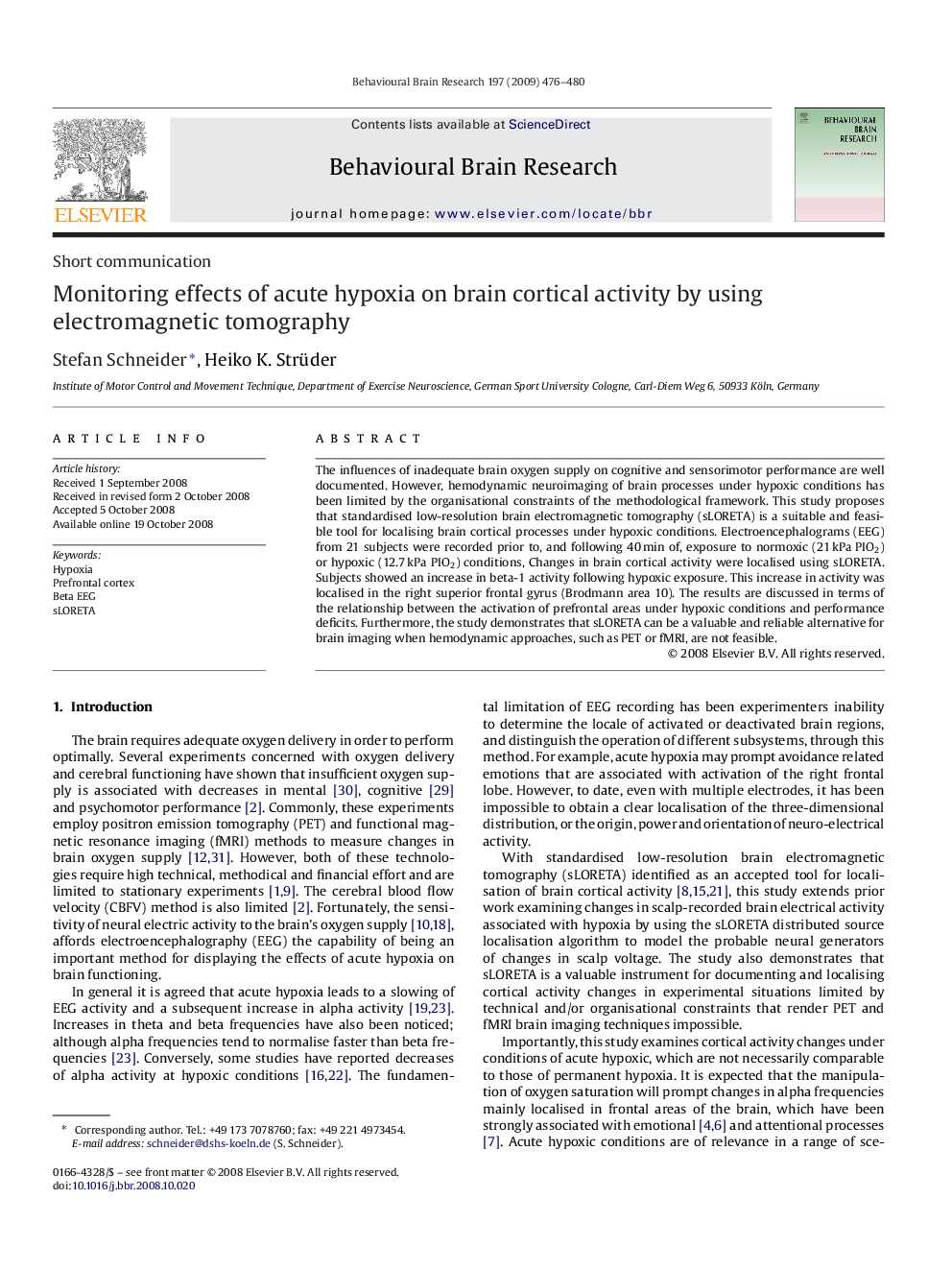| Article ID | Journal | Published Year | Pages | File Type |
|---|---|---|---|---|
| 4315076 | Behavioural Brain Research | 2009 | 5 Pages |
The influences of inadequate brain oxygen supply on cognitive and sensorimotor performance are well documented. However, hemodynamic neuroimaging of brain processes under hypoxic conditions has been limited by the organisational constraints of the methodological framework. This study proposes that standardised low-resolution brain electromagnetic tomography (sLORETA) is a suitable and feasible tool for localising brain cortical processes under hypoxic conditions. Electroencephalograms (EEG) from 21 subjects were recorded prior to, and following 40 min of, exposure to normoxic (21 kPa PIO2) or hypoxic (12.7 kPa PIO2) conditions, Changes in brain cortical activity were localised using sLORETA. Subjects showed an increase in beta-1 activity following hypoxic exposure. This increase in activity was localised in the right superior frontal gyrus (Brodmann area 10). The results are discussed in terms of the relationship between the activation of prefrontal areas under hypoxic conditions and performance deficits. Furthermore, the study demonstrates that sLORETA can be a valuable and reliable alternative for brain imaging when hemodynamic approaches, such as PET or fMRI, are not feasible.
